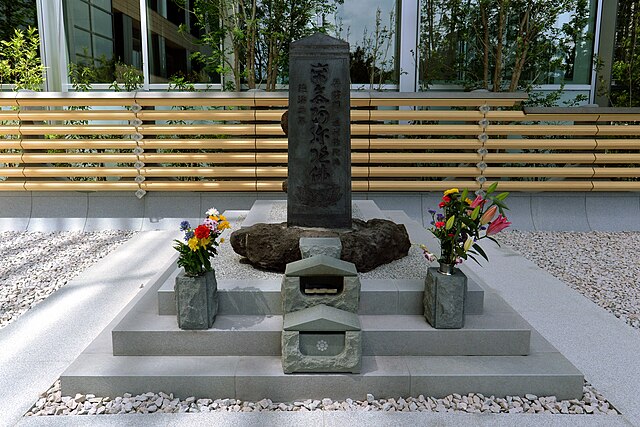In a broad sense, Goryō is an honorific for a spirit, especially one that causes hauntings, and the term is used as a synonym for onryō . In a narrower sense, it refers to a person who was a noble or accomplished person in his or her lifetime, but who lost a political power struggle or died prematurely from an epidemic or other disease, becoming a onyō that brings pestilence or famine and is later enshrined as a kami in Shinto shrines. For example, the "Sandai Jitsuroku" mentions that six Shinto shrines were dedicated to the worship of goryō, which were the spirits of those who died from non-natural causes. Later on, two more shrines were added, bringing the total to eight.

Ukiyo-e by Tsukioka Yoshitoshi depicting Sugawara no Michizane as the Tenjin (kami of thunder.). After Sugawara no Michizane's death, lightning struck the palace, killing and injuring many of the powerful people involved in his banishment, and Sugawara no Michizane was enshrined in the Tenmangū (Shinto shrines) as the Tenjin.
In Japanese traditional beliefs and literature, onryō are a type of ghost believed to be capable of causing harm in the world of the living, injuring or killing enemies, or even causing natural disasters to exact vengeance to "redress" the wrongs it received while alive, then taking their spirits from their dying bodies. Onryō are often depicted as wronged women, who are traumatized, envied, disappointed, bitter, or just furious by what happened during life and exact revenge in death. These kinds of ghosts appear extremely vengeful, ruthless, heartless, brutal, cruel, deranged, egotistical, selfish, bloodthirsty, and cold-hearted.
Ukiyo-e by Utagawa Yoshitsuya depicts the moment when Emperor Sutoku, who died in exile, became an onryō.
The headstone of Taira no Masakado, located between the skyscrapers of Ōtemachi near Tokyo Station, was renovated in 2021 when the surrounding skyscrapers were rebuilt, but the headstone was never moved.
Ukiyo-e by Tsukioka Yoshitoshi depicting Sugawara no Michizane as the Tenjin (kami of thunder.). After Sugawara no Michizane's death, lightning struck the palace, killing and injuring many of the powerful people involved in his banishment, and Sugawara no Michizane was enshrined in the Tenmangū (Shinto shrines) as the Tenjin.
Onryō from the Kinsei-Kaidan-Shimoyonohoshi (近世怪談霜夜星)




